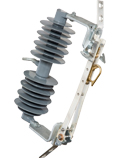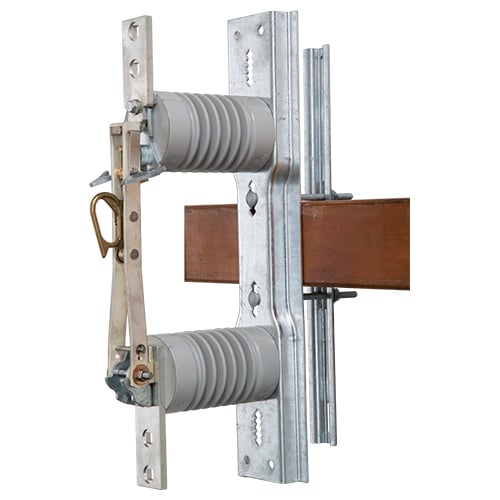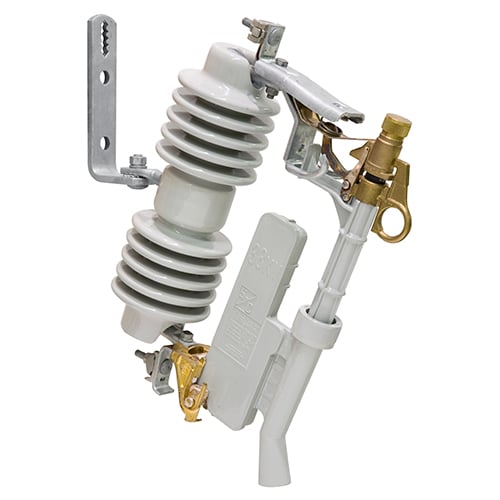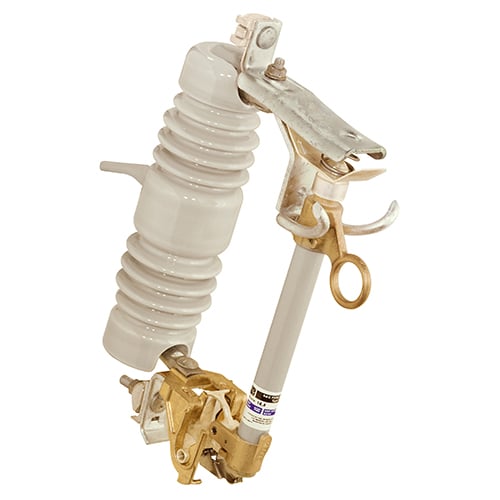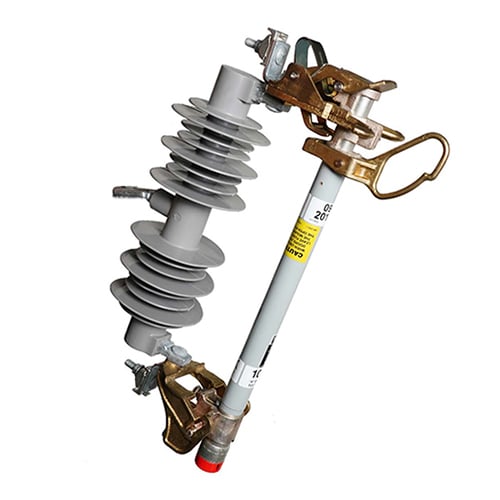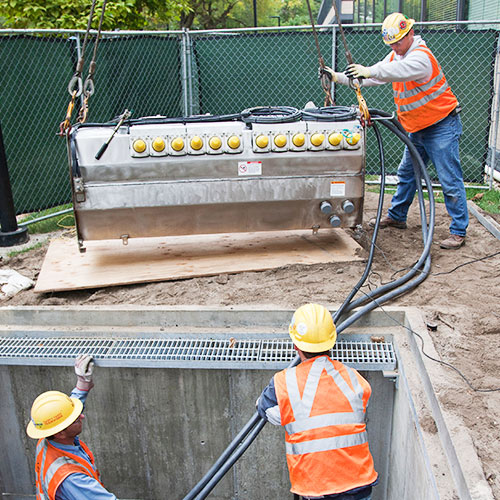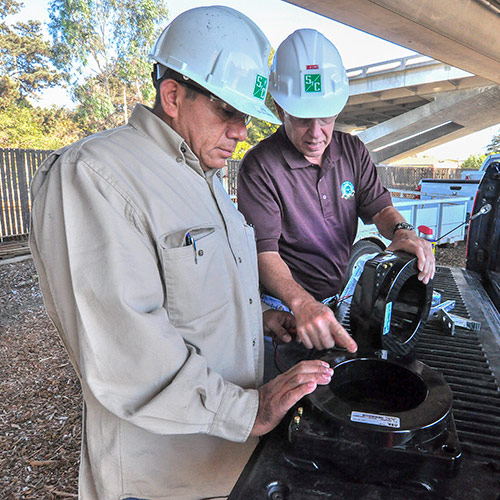Loadbuster Disconnect® Switches
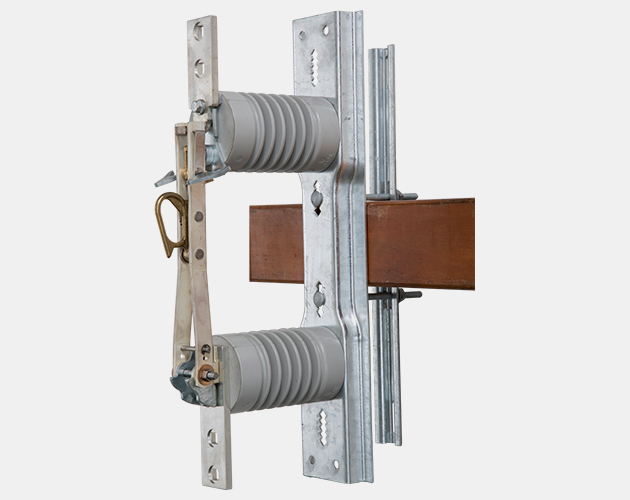
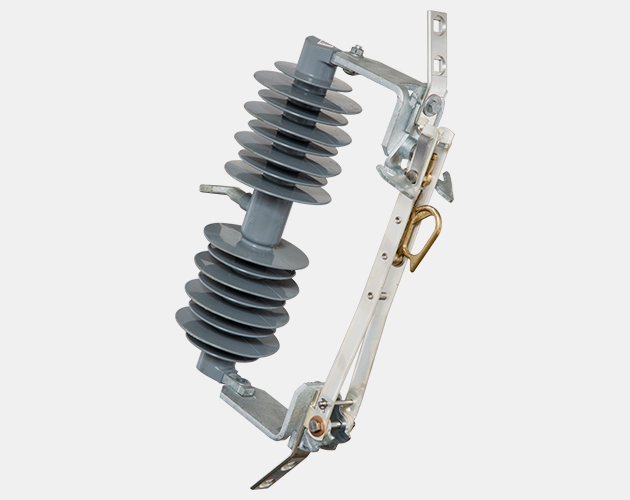
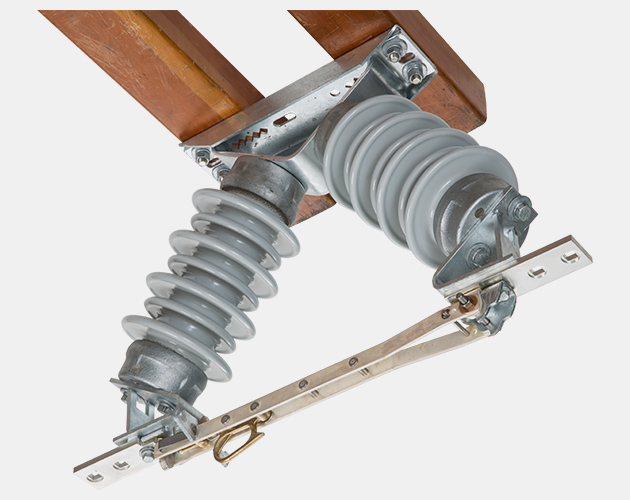
Loadbuster Disconnect® Switches
For outdoor distribution, 14 kV through 34.5 kV
When used with Loadbuster®—The S&C Loadbreak Tool, Loadbuster Disconnect Switches provide the ultimate in distribution live-switching versatility, economy, and universality
Loadbuster Disconnect Switches, when used with the Loadbuster tool, S&C’s portable loadbreak tool, provide the ultimate in low-cost, universal live switching. They offer the operating flexibility of a system with multipoint interrupter switches . . . without the cost associated with building an interrupter into every switch.
S&C’s Loadbuster Disconnect Switches are manufactured in accordance with a quality system certified to ISO9001:2000.
Loadbuster Disconnect Switches are:
- Unexcelled as a straight disconnect: With their rugged station-type reliability, they accommodate the prevailing heavier loads and higher fault currents.
- When used with Loadbuster, they not only can switch load currents through 900 amperes at distribution voltages up to 34.5 kV, but can also break associated transformer-magnetizing currents, line-charging currents, and cable-charging currents.
- Loadbuster Disconnect Switches—Overhead Pole-Top Style are also available with composite-polymer silicone insulators.
Branch Feeder, Main Feeder, Crossarm, and Station Styles
| 50/60-Hz Ratings | Disconnect Switch Gap | |||||
|---|---|---|---|---|---|---|
| kV | Amperes, RMS | |||||
| Nom. | Max | BIL | Cont. | Peak Withstand | Inches | mm |
| 14.4 | 15.5 | 110 | 630 | 65 000 | 8 | 203 |
| 10-7/8 | 276 | |||||
| 10 | 254 | |||||
| 900 | 65 000 | 7-1/2 | 191 | |||
| 10 | 254 | |||||
| 25 | 27 | 125 | 630 | 65 000 | 10-7/8 | 276 |
| 900 | 65 000 | 10-1/2 | 267 | |||
| 25/34.5 | 38 | 150 | 630 | 65 000 | 10 | 254 |
| 900 | 65 000 | 14 | 356 | |||
| 34.5 | 38 | 150 | 900 | 65 000 | 14 | 356 |
| 200 | 900 | 65 000 | 14 | 356 | ||
Overhead Pole-Top Style
| 50/60-Hz Ratings | Disconnect Switch Gap | |||||
|---|---|---|---|---|---|---|
| kV | Amperes, RMS | |||||
| Nom. | Max | BIL | Cont. | Peak Withstand | Inches | mm |
| 14.4 | 15.5 | 110 | 630/900♠ | 65 000 | 8 | 203 |
| 25 | 27 | 150 | 630/900♠ | 65 000 | 11 | 279 |
| 34.5 | 38 | 170♥ | 630/900♠ | 65 000 | 11 | 279 |
♥ S&C’s tested value. Rating per IEEE: 150 kV.
♠ S&C’s certified value. Rating per IEEE: 630A.
1. Attach
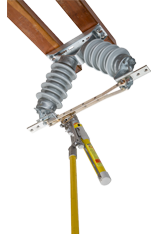
Reach across the front of the disconnect and attach Loadbuster’s anchor to the attachment hook on the far side of the device. Then engage its pull ring with Loadbuster’s pull-ring hook. Loadbuster’s pull-ring latch prevents inadvertent disengagement of the disconnect pull ring and Loadbuster’s pull-ring hook.
2. Pull
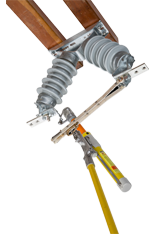
A firm, steady downward pull on Loadbuster — to its maximum extended length — opens the disconnect in the normal manner as the current is diverted through Loadbuster. At a predetermined point in the opening stroke, Loadbuster trips, breaking the circuit positively.
3. Remove
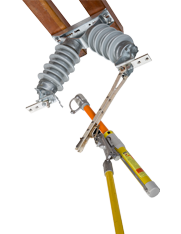
Loadbuster is disengaged by first removing its anchor from the disconnect attachment hook. Then, with the blade in the open position, Loadbuster is removed from the pull ring with a simple “roll-off” motion.
Branch Feeder Inverted Style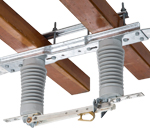
Branch Feeder Vertical Style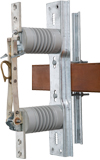
Main Feeder Style
Station Vertical Style
Crossarm Inverted Style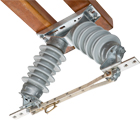
Crossarm Vertical Style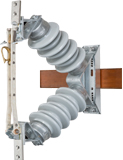
Overhead Pole-Top Style